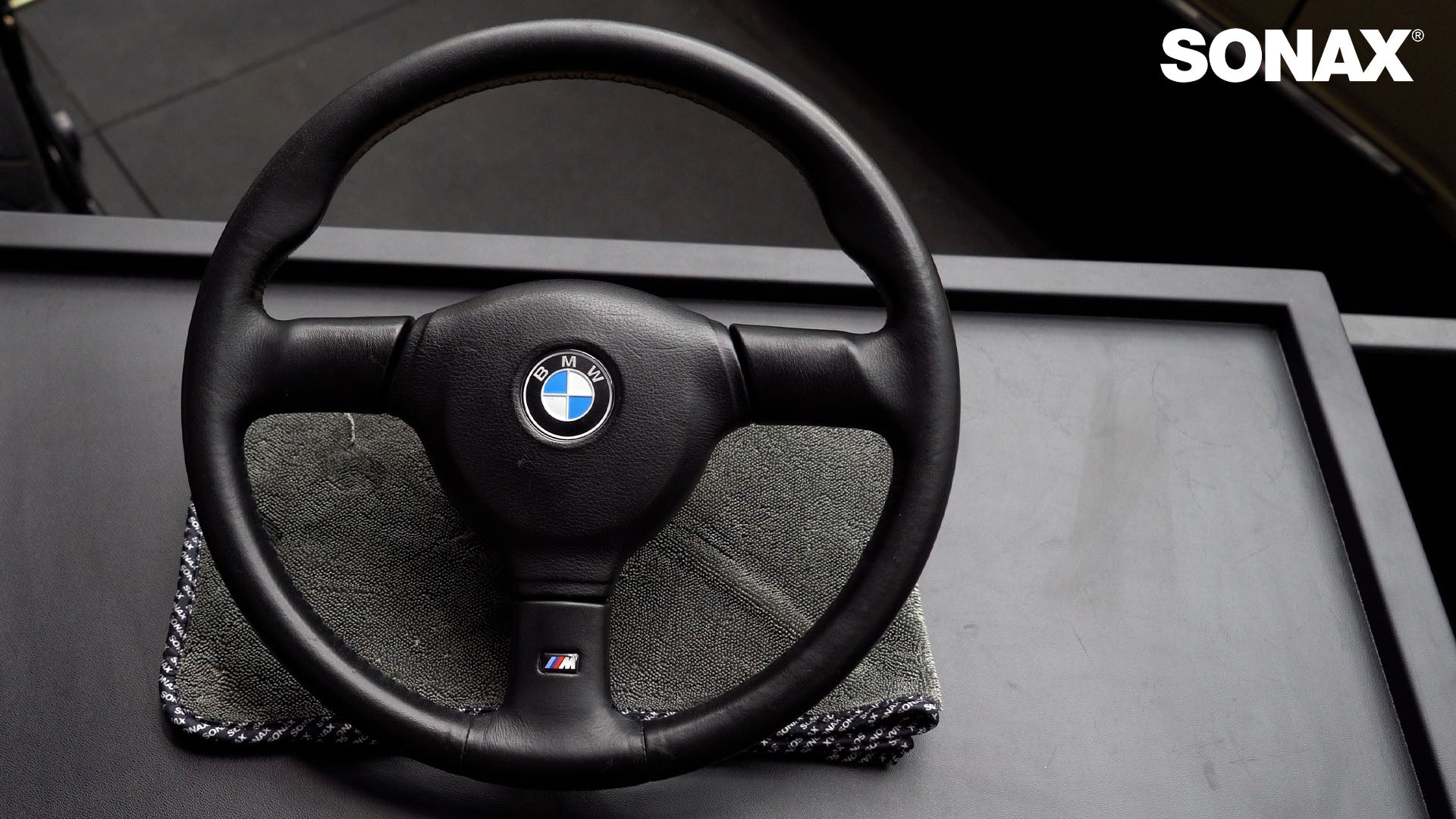Do you find yourself struggling with dim, hazy headlights that compromise your visibility on the road? Don't worry, we've got you covered. Welcome to our step-by-step guide on restoring your headlights for crystal clear visibility.
Over time, factors such as weather, UV exposure, and oxidation can cause your headlights to become yellowed and cloudy, diminishing their performance. Luckily, with a few simple steps, you can restore your headlights and bring back that brand-new clarity.
You may have seen people use toothpaste, lemons & so forth to restore headlights, these methods simply will not last or deliver the best results.
With our step-by-step approach, you'll be amazed at how easily you can restore your headlights to their former glory. So, let's get started and give your headlights the rejuvenation they deserve!
The importance of clear headlights for safe driving
Clear headlights play a crucial role in ensuring your safety on the road. When your headlights are dim or hazy, your visibility is significantly reduced, making it harder for you to see the road ahead and for other drivers to see you. This can lead to accidents and potentially dangerous situations, especially during nighttime or adverse weather conditions.
Not only do clear headlights improve your visibility, but they also enhance the overall appearance of your vehicle. Cloudy or yellowed headlights can make your car look older and neglected, while bright and clear headlights give your vehicle a fresh and well-maintained look.
Signs that your headlights need restoration
Before diving into the restoration process, it's essential to identify whether your headlights need restoration in the first place. Here are some common signs that indicate your headlights are in need of some TLC:
1. Dimming or Reduced Light Output: If you notice that your headlights aren't as bright as they used to be, or if they don't provide sufficient illumination on the road, it's a clear sign that your headlights need restoration.
2. Yellowing or Cloudiness: Over time, headlights can become yellowed or cloudy due to UV exposure and oxidation. This not only affects their appearance but also decreases their performance.
3. Scratches or Pitting: If your headlights have visible scratches or pitting, it's a sign that the protective coating on the headlights has worn off, leaving them vulnerable to further damage.
If you notice any of these signs, it's time to restore your headlights and ensure your safety on the road.
Understanding the causes of headlight damage
To effectively restore your headlights, it's important to understand the primary causes of headlight damage. By addressing the underlying issues, you can prevent future damage and prolong the clarity of your headlights. Here are the main culprits behind headlight damage:
1. Weather Exposure: Constant exposure to harsh weather conditions such as rain, snow, and extreme temperatures can cause your headlights to deteriorate over time.
2. UV Radiation: The sun's UV rays can cause the plastic lens of your headlights to yellow and become hazy. This not only affects the appearance but also reduces the effectiveness of your headlights.
3. Oxidation: Oxidation occurs when the protective coating on your headlights breaks down, leaving the plastic lens vulnerable to damage. This leads to cloudiness and reduced light output.
By understanding these causes, you can take preventive measures to mitigate future damage and maintain the clarity of your headlights for longer periods.
Step 1: Preparing your headlights for restoration
Before starting the restoration process, it's crucial to prepare your headlights properly. This ensures that you achieve the best possible results and avoid any potential damage. Follow these steps to prepare your headlights for restoration:
1. Clean Your Headlights: Start by thoroughly cleaning your headlights using a mild automotive detergent or soap. This removes any dirt, grime, or debris that may be present on the surface.
2. Tape Off Surrounding Areas: To protect your vehicle's paintwork, use painter's tape or masking tape to cover the areas surrounding your headlights. This prevents accidental damage or scratching during the restoration process.
Step 2: Sanding the headlights to remove oxidation
After preparing your headlights, it's time to remove the oxidation that has built up on the surface. This step is crucial for restoring the clarity of your headlights. Follow these steps to sand your headlights effectively:
1. Choose the Right Sandpaper: Select a sandpaper with a higher grit (around 1500-2000 grit) for this step. The finer grit helps to smooth out the surface and remove the remaining oxidation.
2. Wet Sanding: Wet the sandpaper and the surface of your headlights. This helps to lubricate the surface and prevent excessive heat buildup. Gently sand the headlights in a back-and-forth or circular motion, focusing on the areas with the most oxidation.
3. Rinse and Repeat: Regularly rinse the headlights with water to remove any residue and check your progress. Repeat the sanding process until the surface is smooth and free from oxidation.
By sanding your headlights, you're effectively removing the damaged layer, revealing a cleaner and clearer surface underneath.
Step 3: Polishing and sealing the headlights for long-lasting clarity
This final step helps to protect the headlights from future damage and enhances their overall appearance. Follow these steps to polish and seal your headlights:
1. Choose a Headlight Polish: Select a headlight polish that is specifically designed to remove fine scratches, restore shine, and provide UV protection.This will regain the clarity removed by sanding.
2. Polish the Headlights: Rub the polish onto the surface of your headlights using circular motions. Apply gentle pressure to ensure even coverage. Continue polishing until the headlights are smooth and free from any imperfections.
3. Apply a Sealant or UV Protectant: Once the headlights are polished, apply a sealant or UV protectant to provide long-lasting protection. This helps to prevent future yellowing, cloudiness, and oxidation.
4. Buff and Wipe: Use a clean microfiber cloth to buff the sealed headlights and remove any excess product. This leaves your headlights with a high-gloss finish and ensures optimal clarity.
By polishing and sealing your headlights, you're creating a protective barrier that helps to maintain their restored clarity and prolong their lifespan.
Maintaining your restored headlights
Now that you have successfully restored your headlights, it's important to follow some maintenance tips to ensure they stay in top condition for as long as possible. Here are some tips to help you maintain your restored headlights:
1. Regular Cleaning: Clean your headlights regularly using a mild automotive detergent or soap. This helps to remove dirt, grime, and other contaminants that can build up and affect their clarity.
2. Waxing: Apply a thin layer of automotive wax, ceramic coating or a spray on sealant to your headlights every few months. This provides an additional layer of protection against UV radiation and helps to maintain their shine.
3. Avoid Harsh Chemicals: When cleaning your vehicle, avoid using harsh chemicals or abrasive cleaners on your headlights. These can damage the protective coating and cause cloudiness or discoloration.
4. Park in Shade: Whenever possible, park your vehicle in a shaded area or use a car cover. This helps to minimize UV exposure and reduces the chances of your headlights yellowing or becoming hazy.
By following these maintenance tips, you can enjoy your restored headlights for an extended period and ensure maximum visibility on the road.
Common mistakes to avoid during headlight restoration
While restoring your headlights, it's important to avoid some common mistakes that can hinder the results or cause damage. By being aware of these mistakes, you can achieve optimal results and prolong the clarity of your headlights. Here are some common mistakes to avoid:
1. Skipping the Preparation Process: Preparing your headlights properly is crucial for achieving the best possible results. Skipping this step can lead to ineffective restoration or potential damage.
2. Using Incorrect Sandpaper Grit: Using sandpaper with the wrong grit can result in either insufficient removal of oxidation or excessive scratching of the headlights. Always use the recommended grit for each step.
3. Applying Too Much Pressure: Applying excessive pressure during sanding, application of restoration solutions, or polishing can cause damage to the headlights. Be gentle and let the products do the work.
4. Neglecting Protective Measures: Failing to tape off surrounding areas or protect your vehicle's paintwork can result in accidental damage or scratching during the restoration process. Take the time to protect your vehicle properly.
By avoiding these common mistakes, you can ensure a successful headlight restoration process and enjoy the benefits of improved visibility and safety on the road.
To make it super easy, we have a complete kit for restoring headlights (And it uses a Osram approved headlight coating). View it here.
Enjoying improved visibility and safety on the road
Restoring your headlights for crystal clear visibility is a straightforward process that can significantly enhance your safety on the road. By following our step-by-step guide and implementing the expert tips and techniques provided, you can rejuvenate your headlights and enjoy improved visibility, both during nighttime and adverse weather conditions.
Remember, clear headlights not only improve your safety but also enhance the overall appearance of your vehicle. Take the time to assess the condition of your headlights, identify the signs of damage, and follow the restoration process outlined in this guide.
With a little effort and the right tools, you can bring your headlights back to their former glory and ensure a safer and more enjoyable driving experience. Don't let dim, hazy headlights compromise your visibility on the road. Take action today and restore your headlights for crystal clear visibility!




